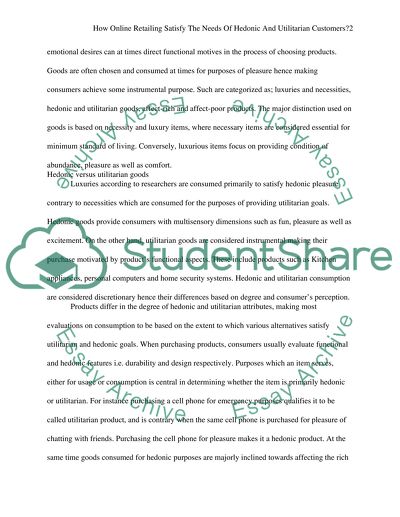Cite this document
(“How online retailing satisfy the needs of hedonic and utilitarian Essay”, n.d.)
How online retailing satisfy the needs of hedonic and utilitarian Essay. Retrieved from https://studentshare.org/marketing/1495264-how-online-retailing-satisfy-the-needs-of-hedonic
How online retailing satisfy the needs of hedonic and utilitarian Essay. Retrieved from https://studentshare.org/marketing/1495264-how-online-retailing-satisfy-the-needs-of-hedonic
(How Online Retailing Satisfy the Needs of Hedonic and Utilitarian Essay)
How Online Retailing Satisfy the Needs of Hedonic and Utilitarian Essay. https://studentshare.org/marketing/1495264-how-online-retailing-satisfy-the-needs-of-hedonic.
How Online Retailing Satisfy the Needs of Hedonic and Utilitarian Essay. https://studentshare.org/marketing/1495264-how-online-retailing-satisfy-the-needs-of-hedonic.
“How Online Retailing Satisfy the Needs of Hedonic and Utilitarian Essay”, n.d. https://studentshare.org/marketing/1495264-how-online-retailing-satisfy-the-needs-of-hedonic.


